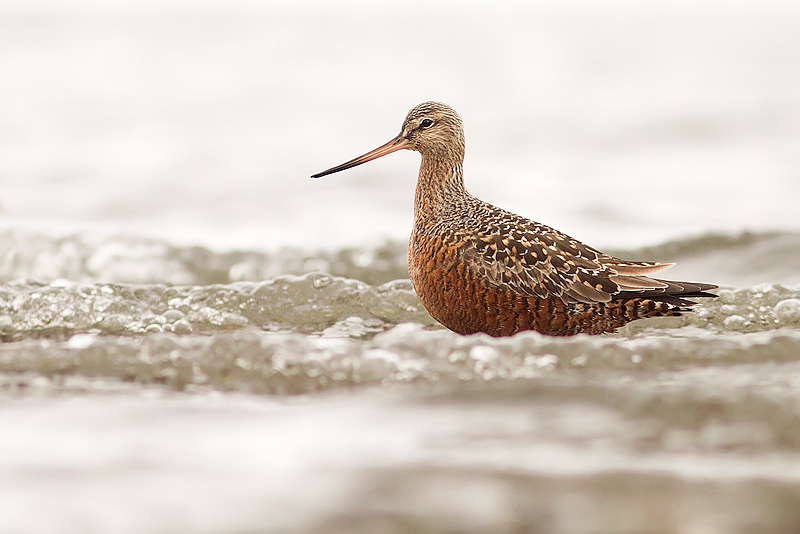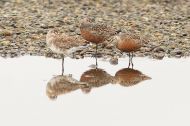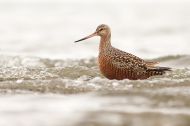Hudsonian Godwit
Becacina de Mar
Limosa hæmastica
Length: 440mm. Sexes alike. Bill deep pink on basal half and blackish on apical half; iris dark brown; eyebrow white; chin and throat whitish; head, neck, upper back and scapulars uniform light brownish grey; lower back blackish brown; rump and uppertail coverts white; rectrices white at base followed by a broad blackish brown band and a narrow white terminal band. Breast and flanks light brownish grey; abdomen and undertail coverts white. Wing coverts light brownish grey, greater wing coverts show a white terminal band; secondaries very dark brown to blackish; primaries blackish brown and white to base forming a white band that extends to the greater coverts; underwing coverts and axillaries blackish brown. Legs slate grey. In nuptial plumage the neck is greyish chestnut with blackish striation; wing coverts grey; breast, flanks and abdomen reddish chestnut with narrow blackish barring; flank feathers show a thin black subterminal band and a white terminal band; undertail coverts chestnut with blackish bars and whitish margins to feathers. Similar species: it is recognised by its very long and slightly upturned bill; it is relatively larger than the other similar sandpipers that occur in the area (Willet, Catoptrophorus semipalmatus, and Greater Yellowlegs, Tringa melanoleuca). Habitat and behaviour: it is found solitary, in pairs or in vast flocks. It frequents seashores, preferably muddy ones, ponds and marshes, almost always found in shallow waters. It feeds on molluscs, crustaceans and other invertebrates. The Hudsonian Godwit breeds in the Arctic and regularly arrives on its migration from September to March or late April or even later, remaining until the winter. Range: it occurs in the eastern and central region of Argentina reaching Córdoba, La Pampa and Buenos Aires. In Patagonia it can be found in the east of Río Negro and all over Chubut and Santa Cruz to Tierra del Fuego; early in the 1960s, the authors spotted three specimens and collected one of them at El Hoyo de Epuyén, located in northwest Chubut.
Illustrated Handbook of the Birds of Patagonia
Kindness: Kovacs Family |











